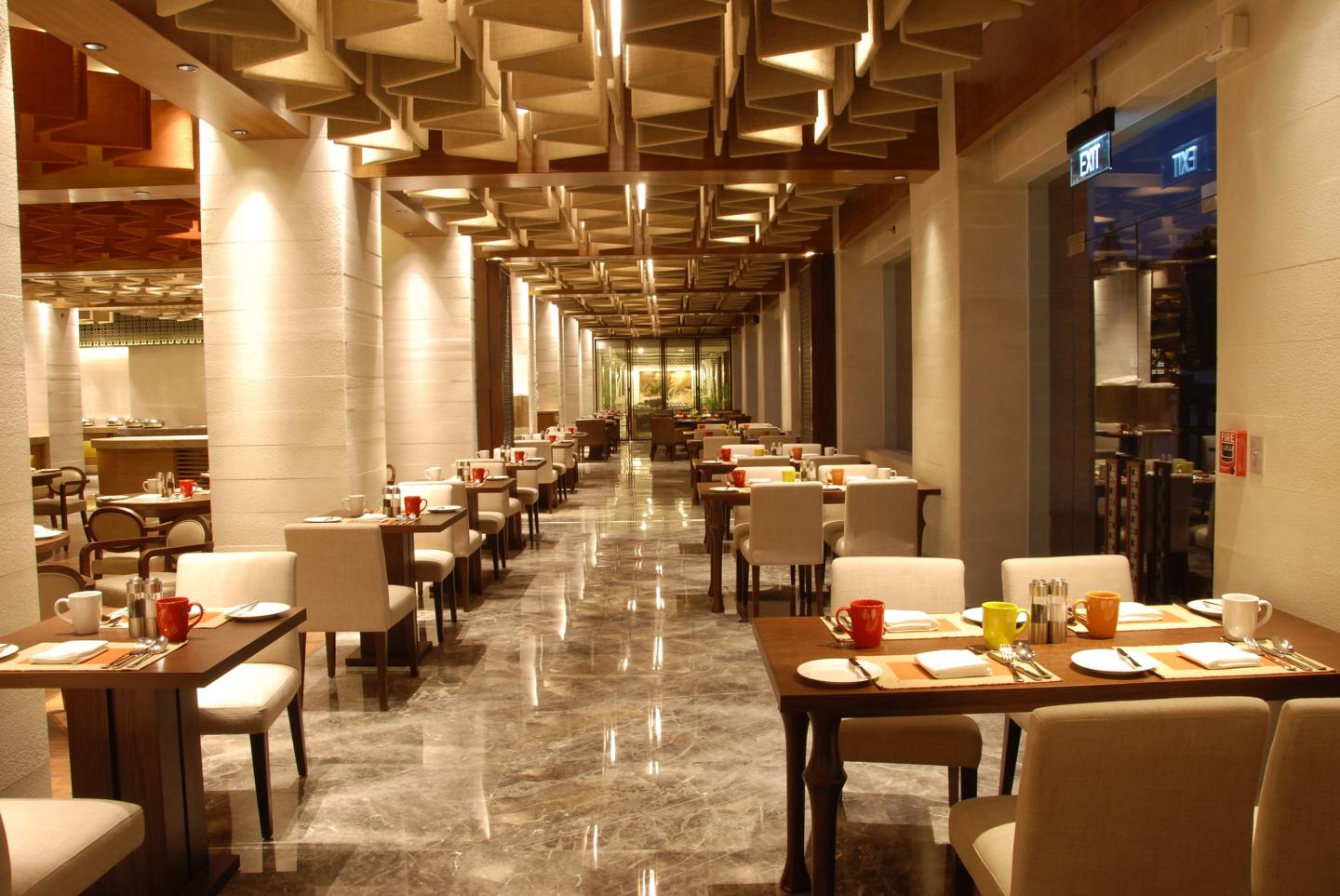The project brief calls for the refurbishment and interiors of a 40-year-old heritage hotel located in Kathmandu, Nepal. The original planning of the building is contemporary in nature but is infused with traditional motifs.
At morphogenesis we deemed it necessary to enrich the Nepalese aspect of design, so that the sense of being in a place (i.e) is re-inforced to create “An architecture od Somewhere”. Nepal is infused with a rich, ancient and refined culture that has embraced diversity and has enabled a unification of artistic and architectural traditions of the old and the new. The architectural intent and the design approach behind the refurbishment of the hotel follows a similar thought process, embracing both tradition and modernity simultaneously.
The experience is evident right from the Port Cochere where sculptural symbolism has been deployed for impact. The large bell is a valuable Nepalese motif which almost marks the processional passage to the All Day Dining Restaurant. The reception areas have been envisaged as illustrative of the physical landscape of Kathmandu, amidst the valley of the Himalayan mountain range while the brief also mandated a face-lift to the facade. Different textures of colours and stones from these mountains have been incorporated to craft a vibrant setting that blends together with the proximate physical environment of the hotel.
The material palette for the All-day dining is replete with elements of Nepalese Architecture. Whilst care has been taken to shortlist crafts and symbols which are traditional, their actual incorporation in the design finds new and unusual interpretations. Familiarity and surprise co-exist and create an earthy appeal through feature elements such as wooden jaali, exposed bricks etc. The ceiling is further accentuated with fabric panels (with an acoustic infill) and the fretted screen or the jaalis delineate the functions effectively. Walls reminiscent of the candles lit across the various temples in the city are the highpoint of the design in the evenings. Traditional tankha art has been used liberally. The ceilings create a rhythmic pattern with decorative customized light suspensions in copper and brass evocative if rhythms found in communal gathering spaces. Creative interpretation of Nepalise ceramics as ceilings and walls offers an artistic infusion of contemporary design with a traditional material.
All materials used are natural and the details that have been used are locally inspired, and specific to the location such as Metal and Wooden Jaalis, Sculptures, tankha Paintings, and Rice Paper etc. The nature of the project that called for perpetuation of the authenticity of the local area also entailed the planning and implementation of the concept of green interiors.
2010
2011
morphogenesis










